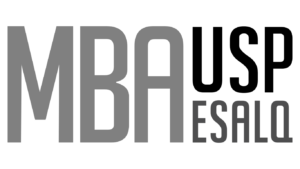Management 3.0 is on the radar of the experts in Project Management and companies. This is because the third generation of this management model combines a collection of games, tools and practices that remain in constant evolution, in order to help any professional manage an organization. It is a way to see the work systems. Cool, right?
And it doesn’t end there. Gino Terentim, professor of the MBAs USP/Esalq, talked to Blog MBA USP/Esalq and gave a super class about the concept of Management 3.0, its benefits for companies and how to apply it in the daily life. It is worth reading!
What is Management 3.0?
According to Terentim, “management 3.0 seeks to look at organizations in an organic way, as a complex adaptive system, that is, a system that organizes, adaptes, evolves and learns, so that everyone is a part of management, regardless of them being managers or not.”
For the professor, an organization that decentralizes management works as a community.
“In a community, everyone is responsible for ‘a part’. Although some people are responsible for the whole, nobody is responsible for everything alone. It works as an organization or system in which everyone feels responsible for management. Thus, decentralizing management to make the system more robust, strong and resilient generates clear changes.”
The journey up until now
But, to reach Management 3.0, it was necessary to go through Management 1.0 and 2.0. The professor explains, historically, the advances of management in the corporate environment, highlighting how managements 1.0 and 2.0 worked, respectively.
“Management 1.0 saw organizations as machines and divided them into parts until, in the smallest part possible, there was a person performing an activity. The premise behind this management is that people do not need to think, just perform. An example of this is the film ‘Modern Times’, with Charlie Chaplin, in which the character, after spending the whole day tightening screws, goes out on the street doing the same movement continuously.”
“This management model has a linear, cartesian and reductionist vision”, explains Terentim.
Unlike the first, Management 2.0 emerged from an experiment conducted in a factory in the United States, by the researcher Elton Mayo, in order to discover the best way of configuring environmental variables of the factory so that women who worked there would perform more. For this, he used factors such as luminosity, acoustic isolation and ergonomics, everything so that women could produce as much as possible.
After several tests, it was discovered that, in fact, it was not the environmental factors that influenced productivity, but the feeling each employee felt of being observed and valued by someone.
“This experiment gave rise to what we know as the ‘theory of human relations’, and was the starting point for the entire study of the motivational field, because it was clear that humans are motivated by something besides material rewards, people are motivated by the fact they feel important. This created a very common jargon in management 2.0 that ‘people are the most important asset of the organization’, that is, making people feel important generates more productivity.”
According to Terentim, the problem is that this speech did not match the practice and, for some reason, the management role was attributed only to some, who were seen as people of trust, with rooms, chairs and better wages. Soon, some people ended up being more important than others, which led to the collapse of management 2.0.
Benefits of Management 3.0 in companies
Having decentralized management is not the same as not having managers and leadership, but making management an intrinsic part of the work of people, so that everyone feels part of it.
Terentim explains with an unusual example: ants. “A decentralized system is much stronger. See, for example, ants in their anthills, where social groups in nature are done in a decentralized way, without a responsible for the management of the anthill and with all ants being responsible.”
“Looking at organizations inspired by nature makes us create systems made to last, and that do not depend on a single person to give a command. Everyone feels part of management, making organizations more robust, strong and adaptable to changes”, says the professor.
Tips to put Management 3.0 in practice
According to Terentim, the author of Management 3.0, Jurgen Appelo, created two bases and six views that help us understand organizations in a more systemic way. The two pillars are:
- Management and leadership: management to maintain status quo and leadership to change the status quo, generating organizational ambidesterity
- Complex thinking: to stop seeing organizations in a linear and cartesian way, and start to see them as complex adaptive systems.
Regarding the six views of Management 3.0:
- Energized people: for Management 3.0 to work, people need to be energized. Otherwise, they will not adapt, empower and work in a creative and decentralized way. Therefore, it is necessary to work in motivation and engagement.
- Delegation and formation of successors: empower the teams so that they perform what is necessary.
- Aligning the restrictions: understanding how everything will be done, what values are irreplaceable and what rules are non-negociable. Working values and organizational culture from the alignment of restrictions, so that things are done in a sustainable way and without harming the values.
- Developing skills: understanding how to work the development of the skills of the team and of the people who compose them.
- Strengthening the structure: an essential step to allow the growth of the company, through the self-organization of the teams.
- Looking for continuous improvement: working with successes and failures, viewing results and behaviors, inserting experiments and practices, avoiding errors and thus improving continuously.
Did you like this class full of content? Had you heard about Management 3.0? Leave a comment below!

